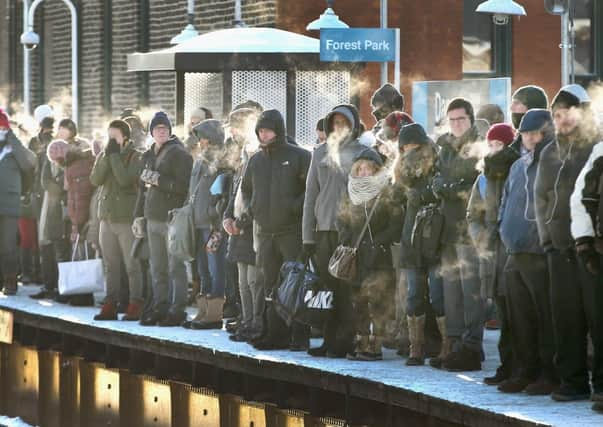Hotter in Hell but US told Arctic blast to return


More than 20 people have died as a result of the extreme weather since Sunday. Forecasters now say the polar vortex that caused temperatures to plummet will now make way for warmer air from the south and the east over the next two days.
Up to 190 million people have been affected, with tens of thousands of homes still without power in several states last night.
Advertisement
Hide AdAdvertisement
Hide AdYesterday, all 50 states experienced freezing conditions for the second straight day, according to Ryan Maue, researcher at bellweather.com which reported an average low temperature of -11C (12.2F) overnight in mainland America.
The last time the weather was so cold for so long across such a wide area of the US was during the ice storms of 1994.
“This type of cold you’d expect once every one or two decades,” Dr Maue said. “The wind made it much, much worse.”
Alex Sosnowski, senior meteorologist at accuweather.com, predicted the icy air would be gone from north-east America by Saturday. “Temperatures will climb out of the cellar from the Plains to the east coast,” he said.
“Over the central states, south and north-east, less wind will make for less harsh, less dangerous conditions. By the weekend, temperatures over most areas affected by the Arctic cold will reach average or above average levels for the middle of January.”
Yesterday, however, many areas remained below freezing and travel delays continued.
US officials reported at least 21 deaths since last weekend due to the extreme cold, including several people who collapsed while shovelling snow and others, including a one-year-old boy in Missouri, killed in road crashes. In Florida, the usually balmy southernmost state, citrus and vegetable growers were taking measures such as extra irrigation and canopies to protect crops. In the north-east many schools remained closed for a second day and winter weather warnings remained in place for Arkansas, Kansas, Mississippi, Missouri, Oklahoma and Tennessee.
Meanwhile in Michigan, the town of Hell and its 600 inhabitants became the subject of media attention when temperatures reached -13C (8.6F), providing an inevitable newspaper headline. Chicago, the Illinois city used to cold winters, was renamed “Chiberia” after four days of below-freezing temperatures.
Advertisement
Hide AdAdvertisement
Hide AdMore than two feet of snow fell in Buffalo, New York, which received its first blizzard warnings for 20 years. In South Carolina, electricity companies used rolling blackouts to cope with the extra demands on energy for heating, and in Indiana more than 10,000 customers remained without power early yesterday, a quarter of the US total.
Four days of weather disruptions for the airlines lifted the number of cancelled flights to more than 11,000.
Forecasters said there was more misery to come with the departure of the freezing air followed by heavy rain in the north-east, including New York, which has seen its coldest temperatures (-15C, or 4F) since 1896.
According to accuweather, the US has probably not seen the last of the polar vortex. Forecaster Paul Pastelok said: “After a relatively mild mid-January, we are likely to experience a return of Arctic blasts later in the month.”